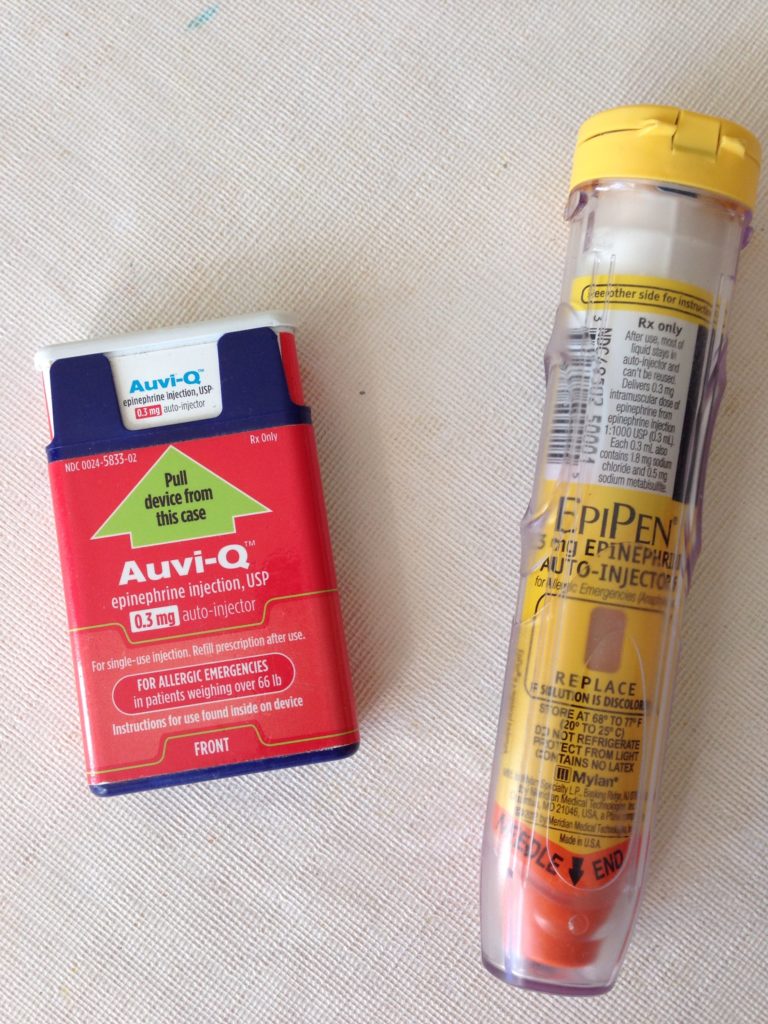
MORGANTOWN — Drug maker Sanofi wants Mylan to pay it up to $11.7 billion in damages, alleging Mylan employed anticompetitive tactics to snuff out Sanofi’s failed EpiPen rival Auvi-Q.
The contentious federal suit began in 2017. Sanofi revealed the $11.7 billion damages claim in a recent filing issued in response to Mylan’s motion for summary judgment to dismiss the case.
The figure is based on estimated lost profits during Auvi-Q’s first brief appearance on the market plus lost profits for the time since – $3.9 billion total – with antitrust law triple damages applied.
“This is a classic antitrust case,” Sanofi said, “involving a monopolist driving its competitor out of the market through anticompetitive conduct for no legitimate business reason other than to maintain its monopoly power.”
Mylan supplied this statement to The Dominion Post regarding Sanofi’s latest move: “Mylan has moved to dismiss Sanofi’s case regarding EpiPen Auto-Injector. In response, Sanofi filed a brief on Friday, Aug. 9, which uses highly inflammatory language and relies on irrelevant evidence in an attempt to support a legally indefensible case and exorbitant and speculative damages claims.
“Mylan continues to believe that Sanofi’s claims in this lawsuit are without merit and intends to defend against them vigorously. The company will file its reply to Sanofi’s brief on Aug. 30.”
More than 1,800 documents have been filed in the case since it opened in April 2017. Many are heavily redacted and more recent filings delve deep into the legal weeds. Here is a broad overview.
EpiPen and Auvi-Q are both epinephrine auto-injectors, abbreviated EAIs throughout the suit. EpiPen was launched in 1980; Mylan began marketing it in the U.S. in 2007.
French firm Sanofi launched the Auvi-Q in 2013. Unlike the tube-shaped EpiPen, the Auvi-Q is about the width and length of a credit card and as thick as a cell phone. Mylan officials had previously said that the EpiPen had an 85 percent market share through most of 2015.
Sanofi recalled the product and took it off the market in November 2105 because of technical problems with the dosage system. When Sanofi withdrew Auvi-Q, EpiPen’s share reached 95 percent.
In 2016, Sanofi returned Auvi-Q’s rights to developer kaléo, which brought it back to market in February 2017.
In the suit, Sanofi said its EAI was “designed for the smartphone generation to be smaller and easier to carry than the EpiPen.” It also included built-in voice instructions for use. It quickly gained traction in the marketplace.
In response, Sanofi alleged, Mylan erected a number of artificial barriers to stifle competition:
— Mylan offered steep rebates – 30% or more – to commercial insurers, pharmaceutical benefits managers and states (together called third-party payors) on the condition they not reimburse for Auvi-Q prescriptions. With ripple effects on doctors, patients and caregivers, Auvi-Q was effectively shut out of more than 50 percent of the market.
— Mylan misclassified its EpiPen to federal and state Medicaid agencies, allowing it to under-reimburse those agencies for EpiPen sales and use the savings to fund its third-party payor rebate scheme.
— Mylan locked competitors out of schools by conditioning its EpiPen4Schools program on exclusive use of EpiPens (a requirement later withdrawn). Mylan spent $4 million lobbying Congress to pass the School Access to Emergency Epinephrine Act and at least $1 million more lobbying states. One major cheerleaders was Gayle Manchin, mother of Mylan CEO Heather Bresch.
— When Auvi-Q hit the market, Mylan jacked up the EpiPen price, which also jacked up the available third-party payor rebate; while Sanofi had its own rebate program, it couldn’t match Mylan’s discount without losing money on each sale, so it was effectively locked out. Payors told Sanofi Mylan’s rebate exceeded Auvi-Q’s total projected sales.
— Mylan used its efforts to keep payors from covering Auvi-Qs as the source for a campaign to highlight that payors weren’t covering Auvi-Qs, harming Auvi-Q’s reputation and perception.
Because of those barriers, and some others, Sanofi said, its U.S. market share fell from 13% at the end of 2103 to just 7% in 2014.
Sanofi said Mylan’s annual EpiPen revenue topped $1 billion starting in 2013. “Thus Mylan had a strong economic motive to undertake the anticompetitive conduct … to protect its crown jewel branded drug project by all means necessary.”
Mylan filed its own counterclaims, alleging Sanofi was the one to engage in anticompetitive conduct.
In the counterclaim, it noted that when it acquired the EpiPen in 2007, there was little awareness of anaphylaxis risk and doctors often prescribed ineffective products to address allergic reactions. Mylan spent millions education the medical community and the public, and making the EpiPen available to schools.
But Sanofi undertook a campaign to besmirch the EpiPen and mislead the healthcare community and the public, Mylan said:
— Sanofi falsely advertised the Auvi-Q as the “new EpiPen,” more patient friendly, safer, easier to carry and use. Its agents allowed some providers to infer that EpiPen was phasing out of the market.
— Auvi-Q sales staff sometimes threw away EpiPen materials in medical offices and replaced it with their own.
— At least one sales staffer offered providers cash kickbacks for prescribing Auvi-Qs. This staffer was not fired, but transferred, implying Sanofi approved of the conduct, and the conduct was more widespread.
“Mylan Specialty suffered, and continues to suffer, harm to its brand image and reputation due to Sanofi’s willingness to engage in illegal activities” to build the Auvi-Q customer base at Mylan’s expense.
The case is in Kansas District Court. For now, jury trial is set for April 13, 2021.
Tweet David Beard @dbeardtdp Email dbeard@dominionpost.com



